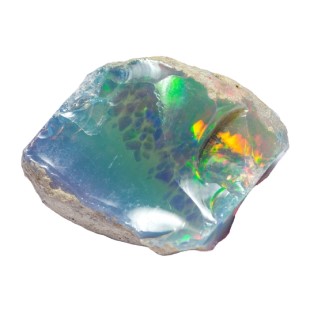Opal Guide
Buying tips, facts & history
Colour
All colours
Our Source
Australia
Mineral class
Mineraloid, a form of silica
Hardness
5 – 6.5 Mohs Scale
Birthstone month
October
Wedding anniversaries
14th

Hard Facts
Opal is a very special gem, because it is classed as a mineraloid. This means that it doesn’t exist in crystal form.
Instead, opals look more like stones that shimmer with incredible displays of colour. For this reason, they are sometimes called “rainbow gems”.
Opals can range from transparent and white to red, pink, orange, yellow, blue, green and black. Having said this, white opals are the most famous because of their widespread use in jewellery.

Where on Earth?
The best opals are considered to come from Australia.
The country is responsible for most of the world’s opal production, although Ethiopia, Mexico and several other countries also have opal fields.
Australian opal mining is ethical, with great emphasis placed on drawing positive environmental and socio-economic effects from the industry.
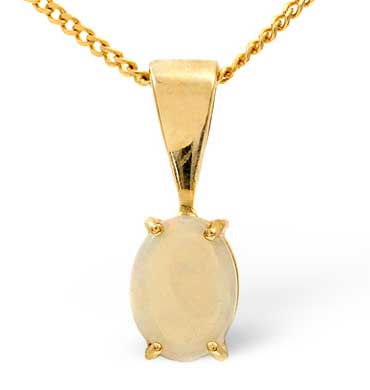
Birthstone and Anniversary
Opal is the traditional birthstone for October and the star sign of Libra.
It symbolises purity, hope and truth. Traditionally people gift opals on 14th wedding anniversaries, but today some also consider it the alternative gem for 12th anniversaries.

Buying Guide
How to assess a Opal’s quality and value?
No two opals are the same. They can come in any colour, or combination of colours, and each one may differ considerably.
Because opals vary so much in appearance, they cannot all be assessed in the same way.
That’s why our gemmologist evaluates opals individually using five different quality factors: type, colour, clarity, cut and carat weight.
To fully appreciate an opal, our gemmologist recommends studying the gem under different kinds of lighting or against a dark background.
TYPE
Because every opal is so different, it’s important to first establish the type of stone being assessed. White or milky opals are the most common type of opal used in jewellery, because of their attractive lustre. Red-hued opals are generally considered the most exotic. Black opals are the most expensive. Here, as follows, our gemmologist will explain each quality factor using white opals and fire opals as examples.
COLOUR
Opals can show one single colour. Or they can show a main “background colour” with additional “secondary colours”. For example, a white opal may have secondary colours that appear as flecks or pearl-like shimmer against a milky white background, depending on the individual stone. Fire opals on the other hand are valued for the uniformity of their main colour, ranging from yellow to orange, and they’re not expected to show any secondary colour or shimmer.
CARAT
Opals exist naturally in many different sizes. Opal size can be measured in carats, but it’s also commonly expressed in millimetre (mm) measurements. Some of the most common oval sizes are 6x4mm, 7x5mm and 8x6mm.
CLARITY
Transparency and clarity vary from opal to opal. Different degrees of clarity are valued in different types of stones. White opals are opaque and there is no expectation of glass-like transparency. A fire opal can vary from almost transparent to translucent. As with all gems, there may be impurities trapped in a stone, but inclusions or marks in white opals and fire opals should not be obvious to the naked eye.
CUT
Oval cuts are most commonly used in opals, because they maximise the use of the rough stone. An oval cut should always be symmetrical. White opals are most often polished into smooth, domed shapes called cabochons. This cut is the best for showing off their shimmer. Fire opals display the finest flashes of light when cut into facets.
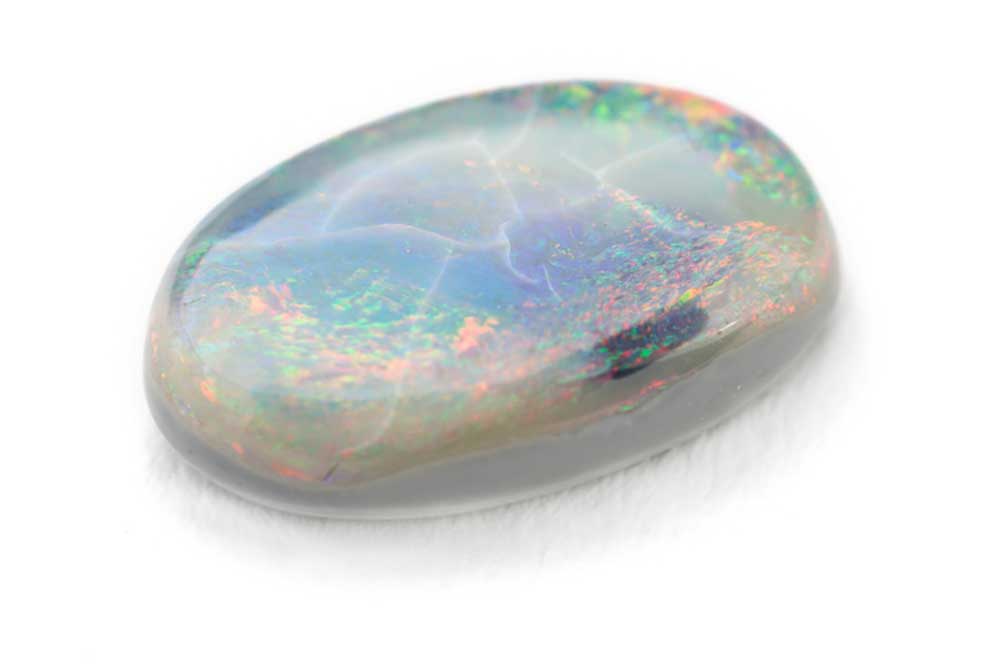
Natural or Treated?
Opal is generally untreated. However, as with all gems, enhancements and imitations can be found on the market.
In particular black opals are often treated with smoke or heat to enhance their black background colour.
Our gemmologist would recommend only buying opals that are not treated. A reputable jeweller will always declare if a stone has been enhanced, so that you can assess its true value.
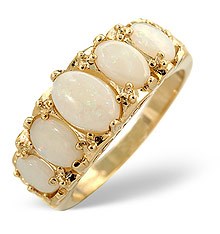
Care and Cleaning
Opal ranks 5 – 6.5 on the Mohs Scale of mineral hardness. This means that it is a gemstones of medium hardness and should be treated with care.
Avoid exposing opal to sudden, extreme temperature changes, because it can fracture.
The only safe way to clean opals is with warm water and soap, scrubbing gently with a soft toothbrush. Afterwards, rinse and pat dry with a clean cloth.
When wearing and storing opal jewellery, take great care not to knock or scratch it, as opal is quite a soft gem and can damage easily.

Modern History
Opals were first set in European crown jewels by Napoleon Bonaparte. He gifted his wife, Empress Josephine, a superb red opal that had such fiery sparkle it was named “The Burning of Troy”.
In the late 1700’s opals fell out of fashion, until Queen Victoria revived their popularity. During her reign, vast opal fields were discovered in Australia and as the British monarchy was considered a leader in fashion at the time, opals were soon back in vogue.
Today, Australia’s biggest film star, Cate Blanchett, is a big fan of opals – not least because they are her country’s national gemstone. She famously wore opal earrings to the 2014 Oscars.
Photo: Joe Seer / Shutterstock.com
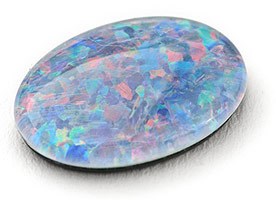
Famous Opals
When Queen Elizabeth II visited Australia in 1953 after her coronation, the government of South Australia, famous for its opal fields, presented her with a necklace that had a large opal set into it. The gem was named the “Andamooka Opal”, after the town it was found in.
It’s believed to be the finest example of an Australian opal. It shows specks of colour in red, green and blue against a pale background and polished into an oval shape, it weighs 203 carats.
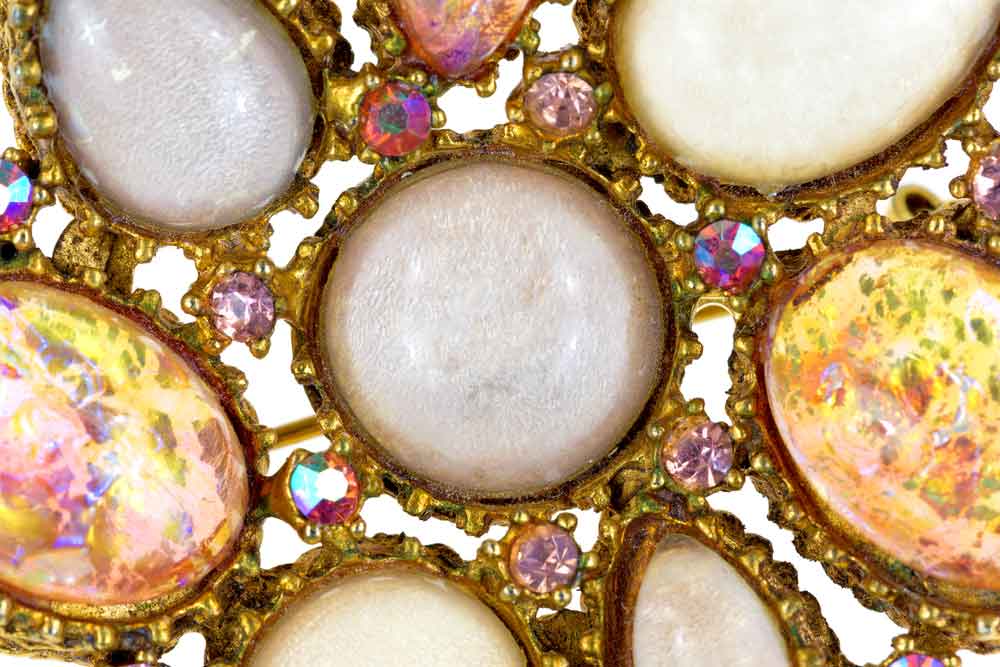
Legend & Lore
Famous lore surrounding the opal in Australia is an ancient indigenous story about the Creator of the Universe.
In this legend, the deity descended to Earth on a rainbow. Wherever he touched the ground with his feet, the stones began to shine in every imaginable colour. That is, according to the story, how opals were created.
Later on, when opals reached ancient Europe, people continued to believe they had magical powers. The Romans, for example, believed the gems could give their wearer good eyesight and help blonde women maintain their beautiful hair colour.

